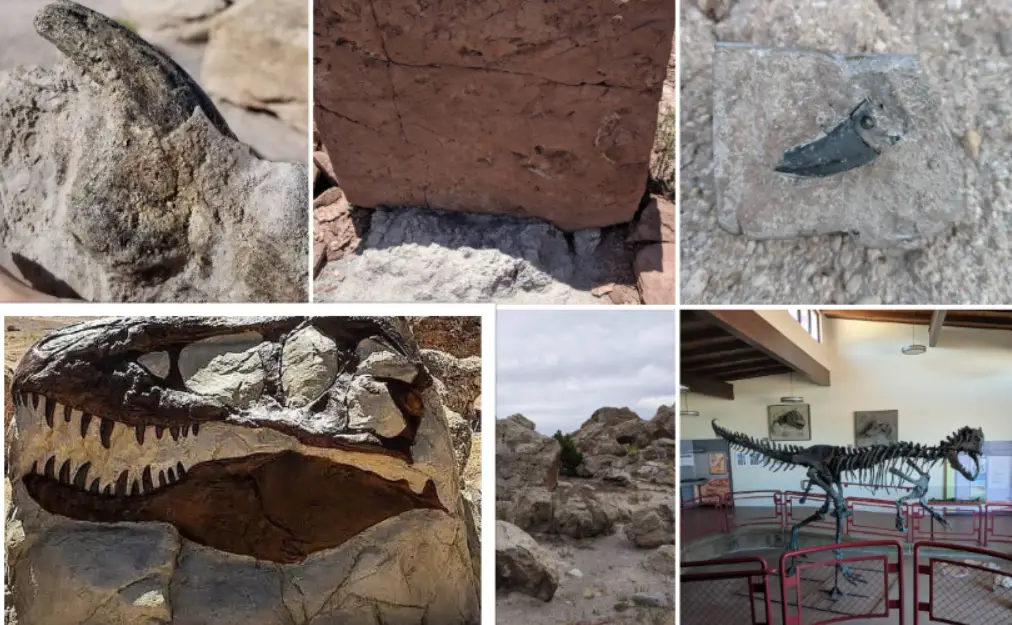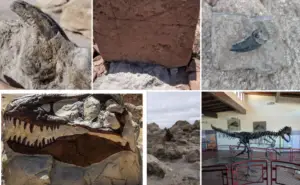Utah – Jurassic National Monument : Interesting Facts, History & Travel Guide

- By
- Aparna Patel
- |
- 11 Apr, 2023
- |

Utah’s Jurassic National Monument is a unique and fascinating destination for anyone interested in the prehistoric world. This paleontological site, established in 1938, is home to some of the world’s richest deposits of Jurassic era fossils and offers visitors a rare glimpse into the ancient history of the Earth.
In this post, we will explore the interesting facts and rich history of the Jurassic National Monument, as well as provide a travel guide for anyone planning a visit. From the site’s distinctive geology and fossil record to its popular activities and accommodations, this guide has everything you need to know to make the most of your trip to this extraordinary destination.
Table of Contents
Interesting facts about Utah – Jurassic National Monument
- Utah is the 13th largest state in the United States by land area, and it is known for its stunning natural beauty and unique geological formations.
- The Jurassic National Monument is located in eastern Utah, near the town of Jensen. It was established in 1938 to protect a large deposit of dinosaur bones and other fossils.
- The monument covers an area of about 1,500 acres and contains one of the world’s richest deposits of Jurassic era fossils.
- Some of the most famous dinosaur fossils found in the monument include those of Allosaurus, Stegosaurus, and Diplodocus.
- The Morrison Formation, which is exposed in the monument, is a geologic formation that dates back to the late Jurassic period, approximately 150 million years ago.
- In addition to dinosaur fossils, the monument also contains petroglyphs and other evidence of prehistoric human habitation.
- The monument is managed by the National Park Service, and visitors can explore the area via hiking trails and a scenic drive.
- Utah is also home to a number of other famous natural landmarks, including Zion National Park, Bryce Canyon National Park, and Arches National Park.
Information & History of Utah – Jurassic National Monument
The Jurassic National Monument is a paleontological site located in eastern Utah, near the town of Jensen. The monument was established in 1938 by President Franklin D. Roosevelt to protect the dinosaur fossils found in the area. The site is known for its unique geology and paleontology, as it contains one of the world’s richest deposits of Jurassic era fossils.
The monument covers an area of approximately 1,500 acres and is managed by the National Park Service. The area was first explored by paleontologists in the late 19th century, and many of the fossils found in the monument have since become famous around the world.
The Morrison Formation, which is exposed in the monument, is a geologic formation that dates back to the late Jurassic period, approximately 150 million years ago. The formation is characterized by its distinctive red, yellow, and green rock layers, and it is known for its rich fossil record of dinosaurs and other prehistoric creatures.
Some of the most famous dinosaur fossils found in the monument include those of Allosaurus, Stegosaurus, and Diplodocus. These fossils have provided important insights into the behavior and biology of these ancient creatures, and they have helped to shape our understanding of the Jurassic period.
In addition to dinosaur fossils, the monument also contains evidence of prehistoric human habitation. The Fremont people, who lived in the area between approximately 700 and 1300 AD, left behind petroglyphs and other artifacts that can still be seen today.
The Jurassic National Monument is a popular destination for tourists and paleontologists alike, as it offers a unique glimpse into the ancient history of the Earth. Visitors can explore the area via hiking trails and a scenic drive, and they can learn more about the monument’s rich natural and cultural history at the nearby visitor center.
Read More:
- John Day Fossil Beds : Interesting Facts, History & Travel Guide
- Jewel Cave National Monument : Interesting Facts, History & Travel Guide
- Ironwood Forest National Monument : Interesting Facts, History & Travel Guide
- Hovenweep National Monument : Interesting Facts, History & Travel Guide
- Hohokam Pima National Monument : Interesting Facts, History & Travel Guide
- Harriet Tubman Underground Railroad National Monument : Interesting Facts, History & Travel Guide
Travel Guide for Utah – Jurassic National Monument
If you’re planning a visit to the Jurassic National Monument in Utah, here are some tips to help you make the most of your trip:
Getting There: The Jurassic National Monument is located in eastern Utah, near the town of Jensen. The nearest major airports are Salt Lake City International Airport and Denver International Airport, both of which are approximately a 4-hour drive from the monument.
Best Time to Visit: The monument is open year-round, but the best time to visit is during the spring and fall when the weather is mild and the crowds are smaller. Summers can be hot and crowded, and winters can be cold and snowy.
Entrance Fees: There is no entrance fee to visit the monument, but some activities, such as guided tours and camping, may require a fee.
Things to Do: The monument offers a variety of activities for visitors, including hiking trails, scenic drives, and guided tours. Be sure to visit the Quarry Exhibit Hall, where you can see dinosaur fossils and learn about the monument’s history and geology.
Accommodations: There are no lodging options within the monument, but there are several nearby towns where you can find hotels, campgrounds, and other accommodations. Some popular options include Vernal, Jensen, and Dinosaur, Colorado.
What to Bring: Be sure to bring comfortable hiking shoes, sunscreen, and plenty of water, as the monument can get hot and dry during the summer months. You may also want to bring binoculars or a camera to capture the stunning views and wildlife.
Safety: The monument is located in a remote area, so it’s important to be prepared and stay safe. Stay on designated trails, keep a safe distance from wildlife, and be aware of weather conditions and potential hazards such as flash floods.
Overall, a visit to the Jurassic National Monument is a unique and unforgettable experience for anyone interested in paleontology and the natural history of the Earth.
What happened at cleveland-lloyd dinosaur quarry?
The Cleveland-Lloyd Dinosaur Quarry is a paleontological site located in central Utah that has yielded one of the world’s largest collections of dinosaur bones. The site is particularly notable for its concentration of Allosaurus fossils, which account for more than 70% of the dinosaur bones found there.
Scientists have long been puzzled by the high concentration of Allosaurus fossils at the site. Some theories suggest that the dinosaurs were trapped and killed in a natural disaster such as a flash flood, while others propose that they were attracted to the site by a source of water or food.
More recently, research has suggested that the dinosaurs may have been drawn to the area by a toxic algae bloom. According to this theory, the algae produced toxins that caused the dinosaurs to become disoriented and die, eventually accumulating in the same area over time.
More Article
- Hanford Reach National Monument : Interesting Facts, History & Travel Guide
- Hagerman Fossil Beds National Monument : Interesting Facts, History & Travel Guide
- Grand Staircase–Escalante National Monument : Interesting Facts, History & Travel Guide
- Grand Portage National Monument : Interesting Facts, History & Travel Guide
Regardless of the cause, the Cleveland-Lloyd Dinosaur Quarry remains an important site for the study of dinosaur behavior and ecology. The site has yielded a wealth of information about the lives and deaths of these ancient creatures, and it continues to be studied by paleontologists from around the world.
Search Posts
Latest posts
-
4 Mar, 2024
Why would you wrap your luggage in plastic?
Popular posts
-
5 Mar, 2024
Why prohibit engine braking?